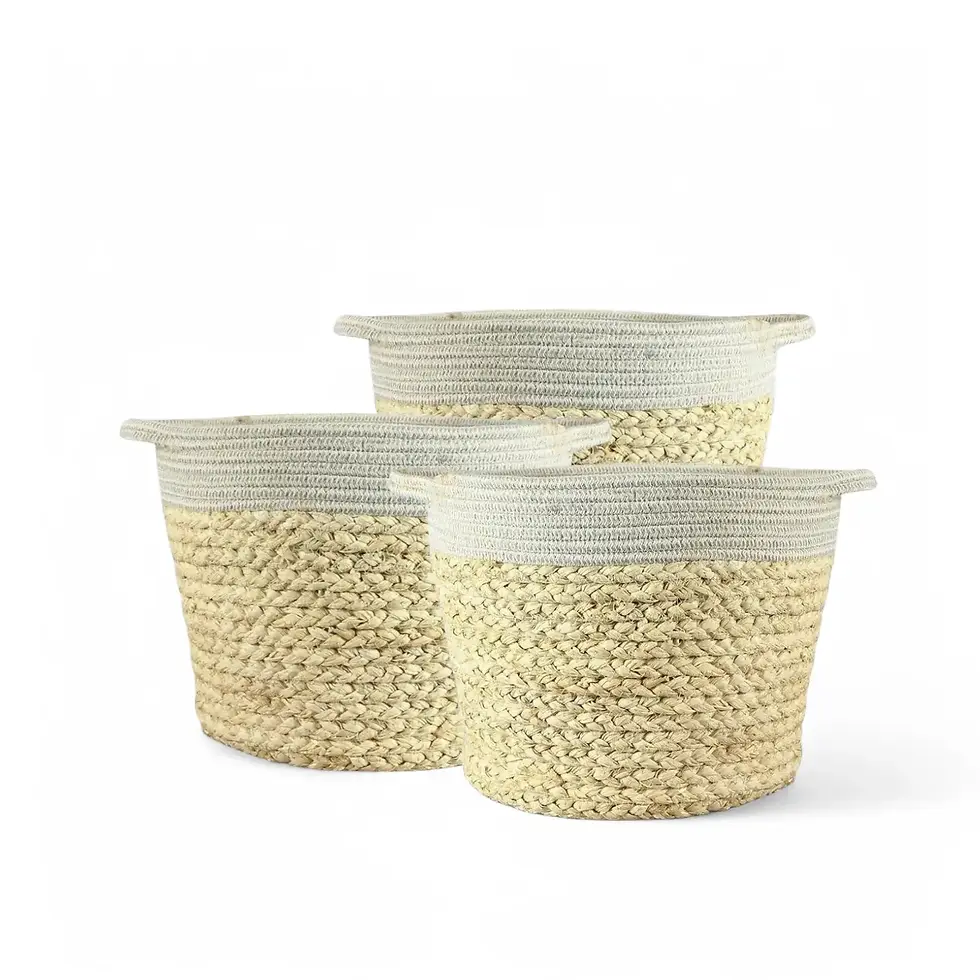Cyanotis beddomei ‘Brown Hill’ - Care Guide, Growing Tips and Essential Information
Cyanotis beddomei ‘Brown Hill’, often called the Teddy Bear Vine, is a unique trailing houseplant with soft, velvety leaves and distinctive orange-furred stems. This cultivar of Cyanotis beddomei is known for its small, fleshy leaves that grow densely along creeping stems, forming compact rosettes over time. Occasionally, this charming plant produces small blue pompom-like flowers, adding an unexpected burst of color to its textured foliage.
Though commonly mislabeled as Tradescantia 'Brown Hill', Cyanotis beddomei belongs to the Commelinaceae family, making it a close relative of Tradescantia but with a more compact, structured growth habit. Its cascading stems make it perfect for hanging planters, while its ability to form dense clumps means it can also be grown as a tabletop plant or ground cover in warm climates.
Why Choose Cyanotis beddomei ‘Brown Hill’?
- Fuzzy, Velvety Leaves: Covered in fine brownish hairs, giving them a soft, plush appearance.
- Trailing Growth Habit: Perfect for hanging baskets, shelves, or terrariums.
- Compact Rosettes: As it matures, the plant forms tighter clumps, creating a bushier look.
- Rare Blue Blooms: Small, pompom-like blue flowers occasionally appear, adding contrast.
- Easy to Care For: Resilient and adaptable to indoor environments, making it great for beginners.
- Interesting Foliage Colors: Depending on light exposure, leaves shift from deep green to bronze.
Cyanotis beddomei ‘Brown Hill’ Origin and Natural Habitat
Native to the Western Ghats in Southern India, Cyanotis beddomei ‘Brown Hill’ thrives in montane rainforests with high humidity, filtered light, and moderate temperatures ranging from 18°C to 30°C. It creeps along the forest floor and clings to surfaces with its spreading stems.
- Growth Habit: Trailing, forming spreading runners and eventually developing dense rosettes.
- Indoor Size: Stems grow up to 60 cm long, with a spread of around 30 cm.
- Growth Rate: Moderate to fast, especially in bright conditions.
- Toxicity: No confirmed reports of toxicity, but best kept out of reach of pets and children as a precaution.
How to Care for Cyanotis beddomei ‘Brown Hill’
→ Light and Placement
- Prefers bright, indirect light but adapts to medium-light conditions.
- Avoid prolonged direct sun, which can scorch the leaves.
- If growth appears leggy or stems become weak, increase light exposure.
- Ideal for east- or west-facing windows or areas with supplemental grow lights.
→ Watering
- Water when the top 2-3 cm of soil feels dry.
- Use the soak-and-dry method—water thoroughly, then allow excess water to drain completely.
- Avoid overwatering, as root rot can occur if the plant sits in soggy soil.
- Reduce watering in cooler months, but don’t allow the soil to become bone dry.
→ Humidity and Temperature
- Thrives in moderate to high humidity (50-70%) but adapts to typical indoor levels.
- If the air is dry, group plants together or use a humidity tray.
- Maintain temperatures between 18°C and 27°C avoid drafts and sudden temperature drops.
→ Soil and Pot Choice
- Needs well-draining soil a light, airy mix is best.
- A succulent or cactus mix with added perlite or sand ensures proper aeration.
- Choose a pot with drainage holes to prevent water accumulation.
→ Repotting
- Repot every 1-2 years or when the plant outgrows its container.
- Spring or early summer is the best time to repot, ensuring healthy root development.
- Trim long stems before repotting to encourage bushier growth.
→ Fertilizing
- Feed with a balanced liquid fertilizer at half strength every 4-6 weeks during the growing season.
- Avoid over-fertilization, which can cause excessive stretching and weak growth.
→ Propagation
- Easily propagated through stem cuttings.
- Cut a healthy stem, allow it to callous, then plant in moist, well-draining soil.
- Keep cuttings in a warm, humid environment for faster rooting.
→ Common Issues and Solutions for Cyanotis beddomei ‘Brown Hill’
→ Pests
- Spider mites, mealybugs, and aphids can be occasional problems.
- Inspect leaves regularly and treat with neem oil, or use beneficial insects or insecticidal soap if needed.
→ Root Rot
- Overwatering or poor drainage can lead to root rot.
- Always use well-draining soil and avoid letting the plant sit in excess water.
→ Leaf Issues
- Browning Tips: Due to low humidity or over-fertilization. Adjust humidity and cut back on fertilizer.
- Drooping Leaves: A sign of underwatering or extreme dryness. Water thoroughly.
- Leggy Growth: Occurs in low-light conditions. Move to a brighter spot.
→ Fungal Issues
- Poor air circulation and excess moisture can lead to fungal infections.
- Ensure good ventilation and avoid wetting leaves excessively.
Etymology and Botanical Background
- Genus Name (Cyanotis): Comes from the Greek words "kyanos" (blue) and "otos" (ear), referring to the blue flowers.
- Species Name (beddomei): Named after Richard Henry Beddome, a British botanist known for his work on Indian flora.
Order Your Cyanotis beddomei ‘Brown Hill’ Today!
Bring home this unique, velvety houseplant and enjoy its trailing growth and soft foliage. Buy now while stocks last!
Cyanotis beddomei ‘Brown Hill’
Cyanotis beddomei ‘Brown Hill’ is approximately 35 cm long and comes in a ⌀ 17 cm pot

























































